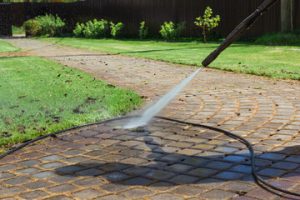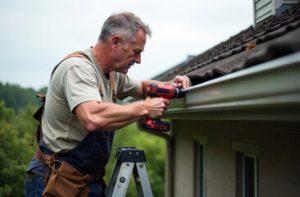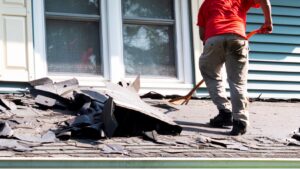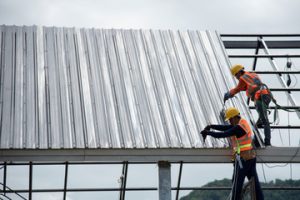Power washing services help keep residential and commercial properties clean and safe. These powerful pressure washers remove contaminants, like mildew and moss, from surfaces that can otherwise damage the structure of buildings and other structures.

Maintaining a power washing business requires monitoring expenses and revenue on a regular basis. This helps ensure that your business is profitable and competitive within the industry. Visit https://www.certifiedsoftwash.ca/ to learn more.
A home or business with a dirty and uncared-for exterior can give the impression of neglect, which turns away potential buyers. Power washing, a cleaning technique involving high-pressure water sprays that can be adjusted to different surface types and levels of dirtiness, quickly eliminates stains and makes surfaces look newer and better-maintained. In the real estate market, curb appeal is a crucial determinant of a property’s perceived value. Homes with pristine exteriors attract more interest from potential buyers, sell faster, and fetch higher prices than their counterparts.
While there are many ways to improve a property’s appearance, few are as effective and cost-efficient as professional power washing services. Using cutting-edge equipment and eco-friendly solutions, these services remove stubborn dirt, grime, mold, mildew, chewing gum, and other contaminants from a wide range of surfaces, including awnings, buildings, driveways, sidewalks, and decks. Regular cleaning also prevents the buildup of harmful substances that can damage the exteriors of buildings and roofs, saving significant repair costs in the long run.
Professional power washing is also a great way to maintain and enhance the appearance of landscaping. The process eliminates weed growth, dirt, and debris, which can cause landscapes to become overgrown and unsightly. It can also help extend the lifespan of plants and prevent soil erosion. Moreover, it promotes a healthy and safe environment by eliminating slippery surfaces caused by the accumulation of mold and mildew.
Curb appeal is a powerful factor in the real estate market, with studies showing that properties with pristine exteriors are more likely to sell at higher prices and faster than their counterparts. Investing in power washing services is a great way to enhance your property’s curb appeal and position it favorably in the market, especially in Houston’s dynamic real estate market. To ensure the quality of your results, choose a reputable and experienced service provider that uses safe and effective techniques to clean various types of surfaces. Check that they have liability insurance and a track record of successful projects. Also, make sure that the service provider uses environmentally friendly cleaning solutions to avoid damaging surrounding plants and surfaces.
Prevents Mold and Mildew Growth
Mold, mildew and algae spores can easily develop on shaded, damp surfaces that aren’t regularly cleaned. These airborne substances aren’t just unsightly; they also cause respiratory problems and can damage materials over time. Regular power washing eliminates these organisms and keeps them from growing, keeping your property clean and safe.
Power washing uses a motorized pump to increase the water pressure from a garden hose, creating a powerful jet of hot water that can dislodge and remove dirt, stains, grease, and grime more effectively than cold water alone. The high-pressure water can also break down grease, oils, and other stubborn substances that may not dissolve in cold water. Professionals are trained to use the right amount of pressure for different surfaces and are equipped with specialized cleaners that safely remove contaminants without damaging the surface underneath.
Regular cleaning prevents deterioration and extends the life of your property’s exterior finishes. Dirt buildup can erode and damage areas like window frames, metal railings, gutters, soffits, and siding over time. Power washing removes these contaminants before they have a chance to damage your home’s structure or cause long-term damage.
A power wash doesn’t just remove the spores that cause mold, mildew, and algae growth; it also prevents them from recurring by removing their food sources. The food particles that are left behind on surfaces like driveways, patios, and decks will attract more spores and lead to future infestations.
Mold and mildew spores thrive in shaded, humid conditions and can eat through materials like wood, drywall, and carpeting. They can also corrode or degrade concrete and metal surfaces over time, leading to structural damage. Power washing blasts away accumulated dirt, preventing these organic fungi from gaining a foothold on your property.
Areas with standing water are ideal breeding grounds for mold and mildew because they create moisture that can linger for extended periods of time. Regularly power washing your walkways, driveways, and outdoor furniture eliminates this excess moisture and helps prevent weeds, mold, and other contaminates from growing. This keeps your outdoor spaces safe and clean, improving the overall appearance of your property and boosting curb appeal.
Prevents Stains
Whether you have concrete sidewalks, asphalt, siding or wooden decks, Power Washing Services can refresh your exterior surfaces to make them look new again. By cleaning away dirt, grime, mold, mildew and other contaminants, this prevents them from causing further damage and staining. Unlike hand washing, which can only get surface level results, power washing is also well-suited for cleaning hard-to-reach areas like crevices and corners of your home or business.
Aside from the obvious aesthetic benefit of a clean building exterior, regular cleaning can also protect against costly repairs and replacements down the line. Stains can eat away at wood and vinyl, degrade paint and other coatings, and encourage the growth of harmful bacteria that can affect your family’s health.
Power washing can eliminate these insidious contaminants and uncover the beauty of your building’s underlying materials, boosting your home’s curb appeal and property value. In addition, a properly maintained outdoor environment is essential for enhancing your enjoyment of your property and improving safety. Regularly cleaning walkways and patios prevents tripping and falling hazards caused by the accumulation of mold, mildew, oil and grease, or other substances.
In addition to preventing the spread of disease-causing contaminants, regularly washing your property’s exterior surfaces also helps to control and inhibit the growth of weeds, moss, and other unwanted vegetation. Power washing uses heated water at high pressure to remove these and other unwanted growths from your property, keeping your yard healthy and aesthetically pleasing.
Trying to scrub your building’s exterior by hand would be a labor-intensive and time-consuming project. Using a power washer, however, is far faster and more effective. Professional Power Washing Services also have access to advanced equipment and cleaners that are safe for a wide range of surfaces and can be used at the correct pressure settings to avoid damaging your property. This allows them to provide more thorough and longer-lasting results than DIY cleaning solutions, and saves you the cost of renting or buying your own equipment, supplies, and safety gear. If you are planning on repainting or renovating your building, Power Washing Services can prepare the surface by removing any peeling paint and stains, so the new coat will adhere correctly.
Prevents Damage
Over time, surfaces like driveways, sidewalks, patios, and decks can develop a buildup of mold, mildew, moss, oil, and other substances that damage the surface. Regular power washing helps to eliminate these substances and prevents them from damaging the surface, which can save money on costly repairs down the road.
Power washing services use a high-pressure water blast to remove tough, stuck on materials and contaminants like oil, grease, and chewing gum from outdoor patios, walkways, and driveways. It is especially effective at removing moss, mold, and algae from surfaces because the hot water is better at killing these spores and breaking down their cell walls. Power washing is also an effective way to kill weeds and control their growth, as well as to remove oil-based stains from pavement and concrete.
While power washing is a great option for many surfaces, it can be dangerous to do it yourself and requires special equipment. It’s important to use the right nozzle for each surface type and to test the pressure on a small area before proceeding. An experienced professional knows the proper settings to use and how to pre-treat stains before power washing them to ensure effective cleaning without causing damage.
Power washing is a quick and easy way to enhance your property’s curb appeal, protect your investment, and enjoy a clean, safe environment for guests and family members. It is also an excellent preparation method for painting projects, as it helps the paint adhere to the surface and last longer. In addition, mold, mildew, and moss can pose health risks for you and your loved ones, so it’s essential to eliminate these substances as soon as they appear on your home.



